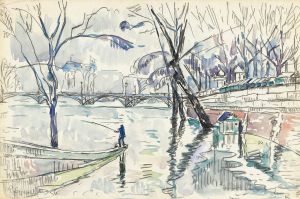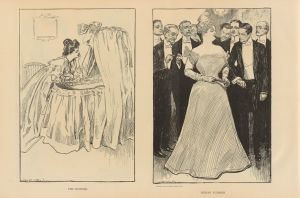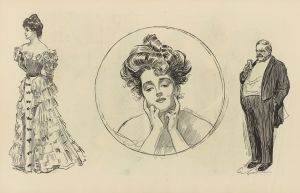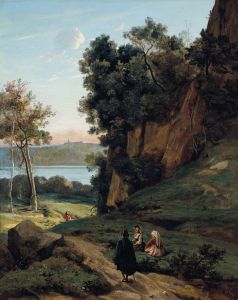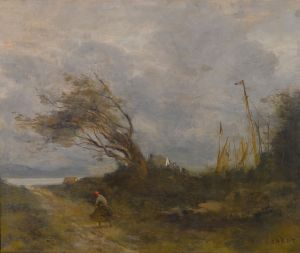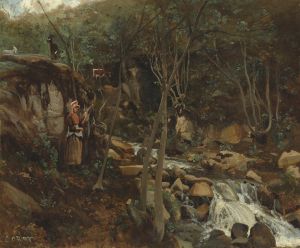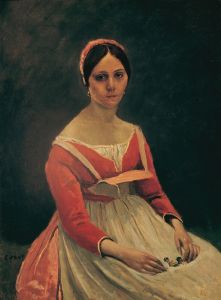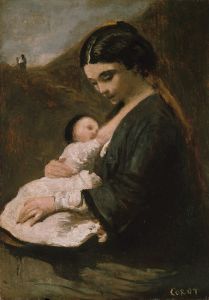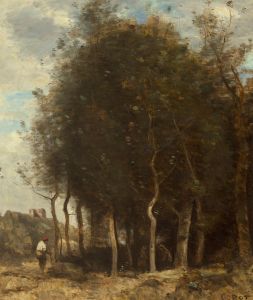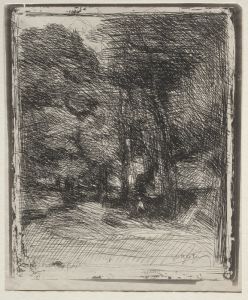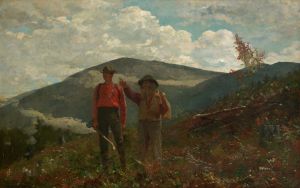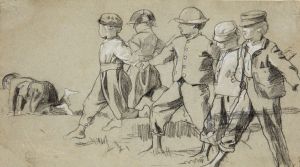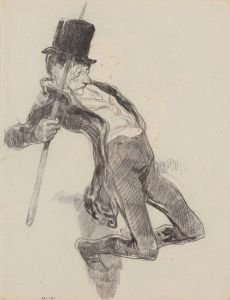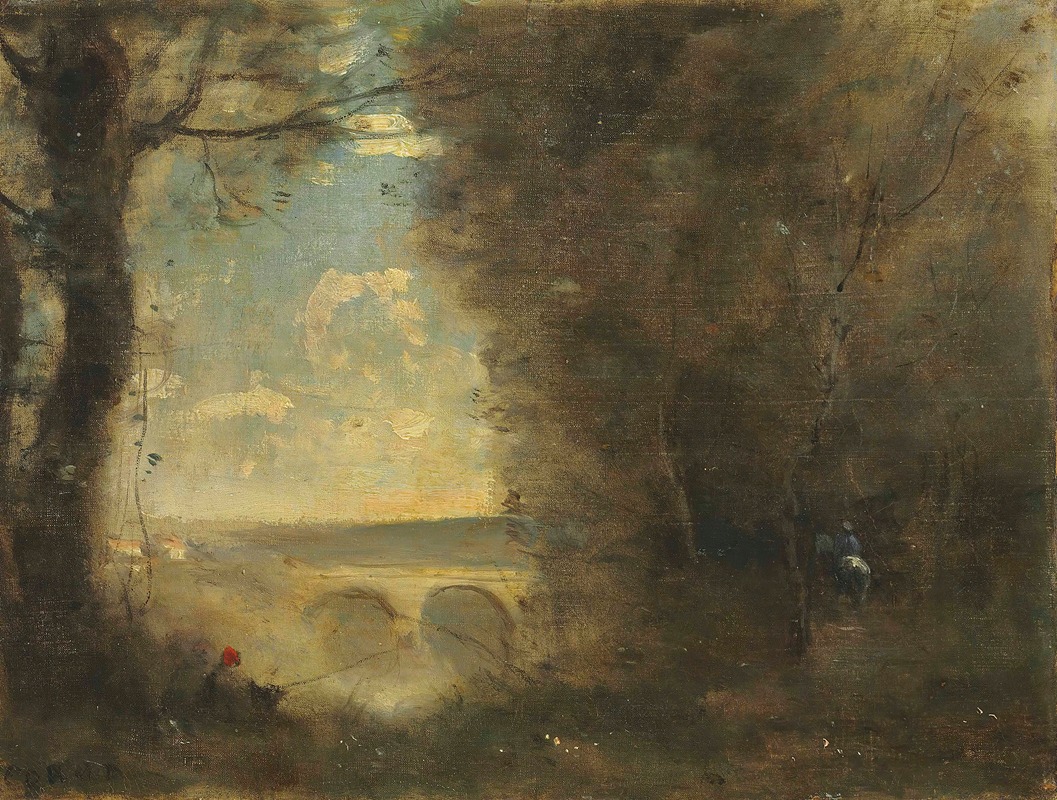
Un Pêcheur À La Ligne, Souvenir Du Pont De Mantes
A hand-painted replica of Jean-Baptiste-Camille Corot’s masterpiece Un Pêcheur À La Ligne, Souvenir Du Pont De Mantes, meticulously crafted by professional artists to capture the true essence of the original. Each piece is created with museum-quality canvas and rare mineral pigments, carefully painted by experienced artists with delicate brushstrokes and rich, layered colors to perfectly recreate the texture of the original artwork. Unlike machine-printed reproductions, this hand-painted version brings the painting to life, infused with the artist’s emotions and skill in every stroke. Whether for personal collection or home decoration, it instantly elevates the artistic atmosphere of any space.
Jean-Baptiste-Camille Corot was a pivotal figure in landscape painting during the 19th century, known for his contributions to the Barbizon School and his influence on the Impressionist movement. One of his notable works is "Un Pêcheur À La Ligne, Souvenir Du Pont De Mantes," which translates to "A Fisherman with a Line, Memory of the Bridge at Mantes."
Corot was born in Paris in 1796 and developed a passion for painting landscapes early in his career. His work is characterized by a delicate balance between realism and idealism, often capturing the serene beauty of nature with a poetic sensibility. Corot's paintings frequently feature soft, diffused light and a harmonious palette, which became hallmarks of his style.
"Un Pêcheur À La Ligne, Souvenir Du Pont De Mantes" exemplifies Corot's ability to blend natural observation with artistic interpretation. The painting depicts a tranquil scene by the riverbank, where a lone fisherman is engaged in his quiet pursuit. The setting is the Pont de Mantes, a bridge located in the town of Mantes-la-Jolie, which lies along the Seine River in France. This location was a source of inspiration for Corot, who often painted en plein air, directly observing the landscape to capture its essence.
The composition of the painting is carefully constructed, with the fisherman positioned in the foreground, drawing the viewer's eye to the central activity of the scene. The bridge, rendered with subtle detail, spans the background, providing a sense of depth and context. Corot's use of light is particularly noteworthy; the soft illumination suggests either early morning or late afternoon, times of day when the natural light is most gentle and atmospheric.
Corot's technique in this painting reflects his mastery of tonal variation and brushwork. The foliage and water are depicted with a delicate touch, using a range of greens and blues that convey the lushness of the landscape. The sky, often a crucial element in Corot's work, is painted with a light, airy quality, enhancing the overall mood of tranquility and reflection.
Throughout his career, Corot was celebrated for his ability to evoke emotion through landscape, and "Un Pêcheur À La Ligne, Souvenir Du Pont De Mantes" is no exception. The painting captures a moment of solitude and contemplation, inviting viewers to pause and appreciate the simple beauty of nature. This work, like many of Corot's paintings, bridges the gap between the classical landscape tradition and the emerging modernist sensibilities of his time.
Corot's influence extended beyond his own lifetime, impacting a generation of artists who followed. His approach to capturing light and atmosphere can be seen in the works of the Impressionists, who admired his ability to convey the fleeting effects of nature. Today, Corot is remembered as a master of landscape painting, and "Un Pêcheur À La Ligne, Souvenir Du Pont De Mantes" remains a testament to his enduring legacy in the art world.





